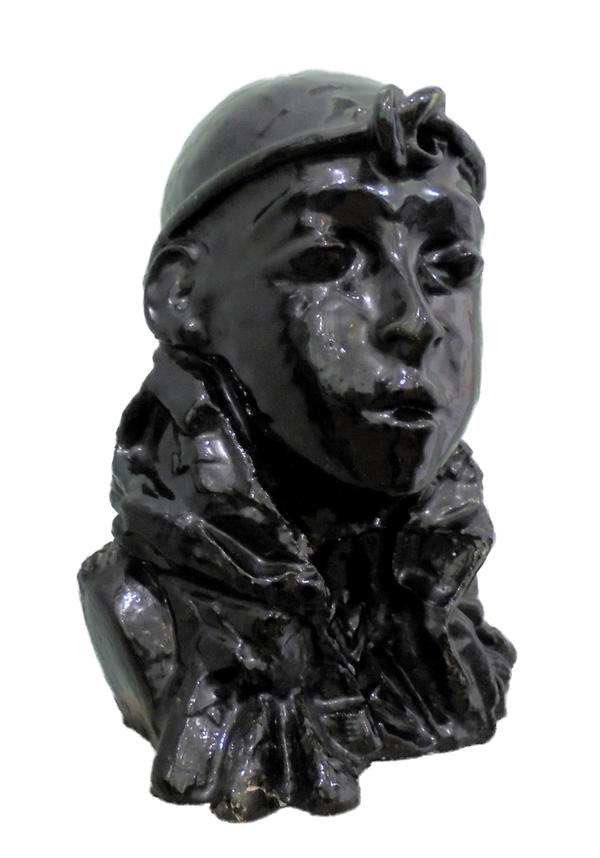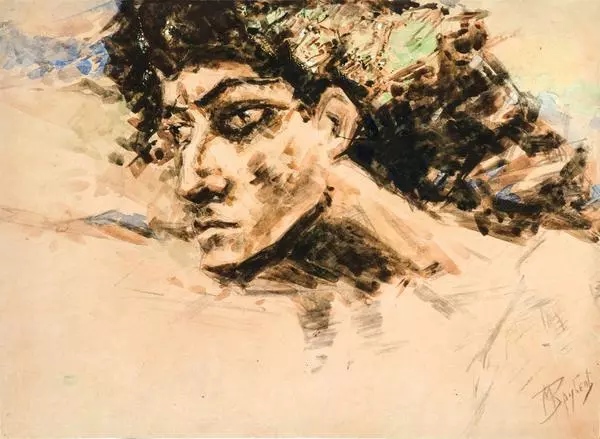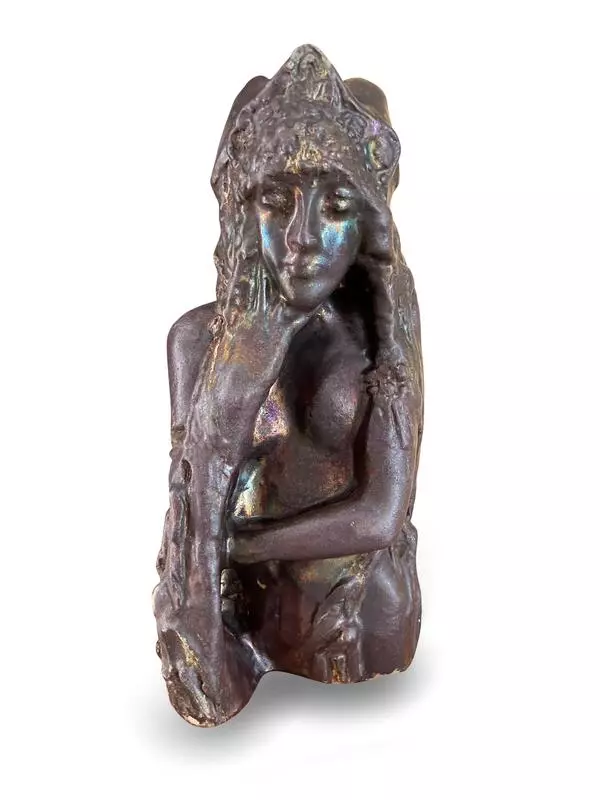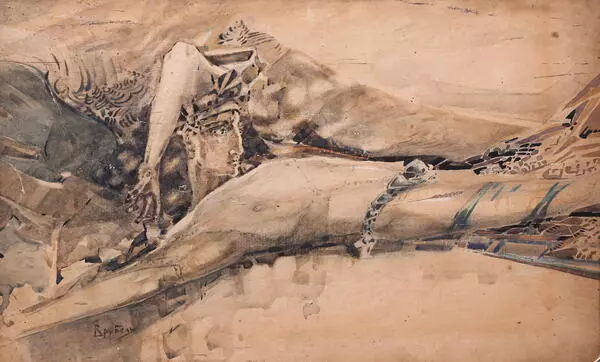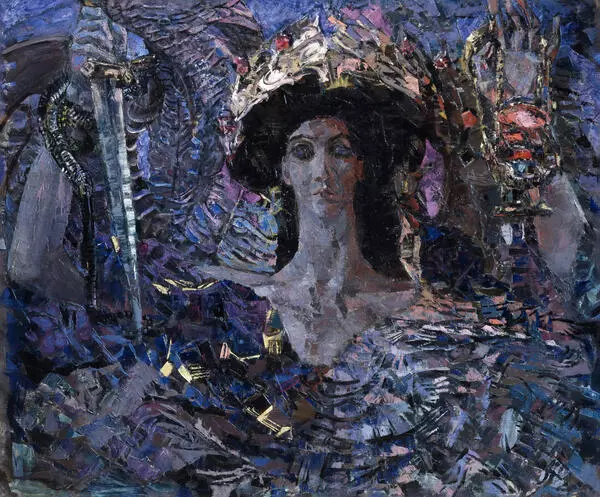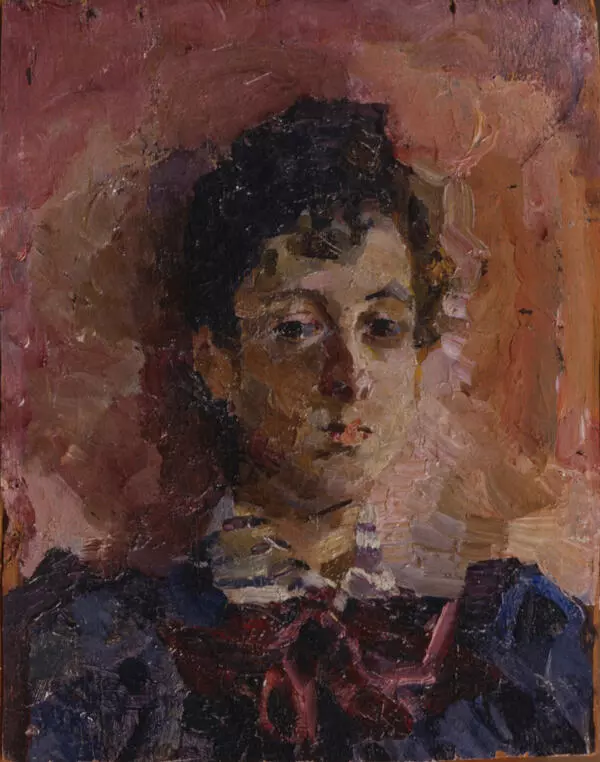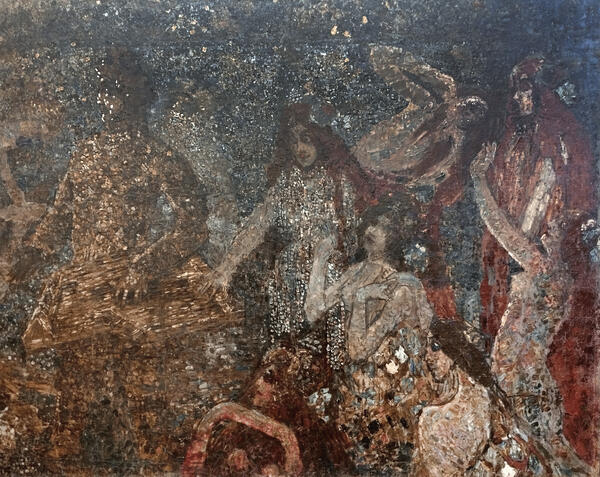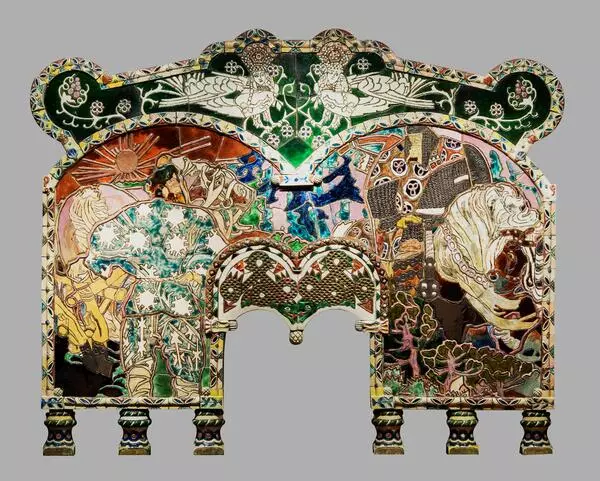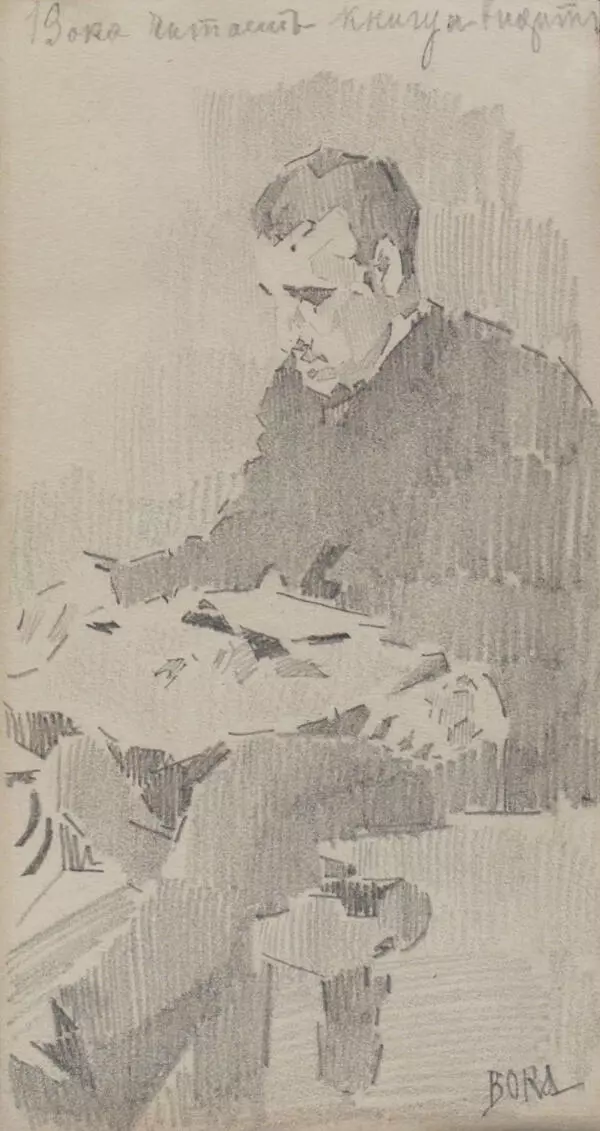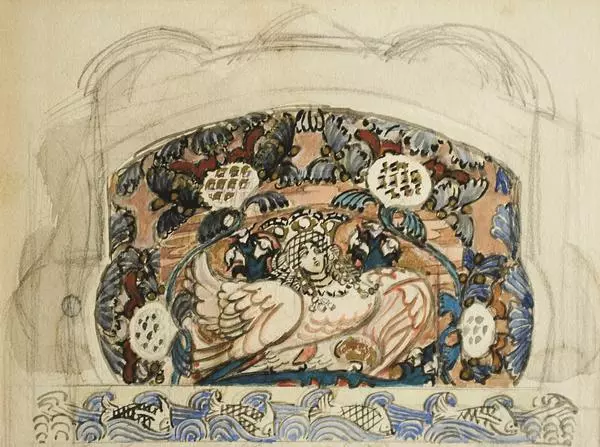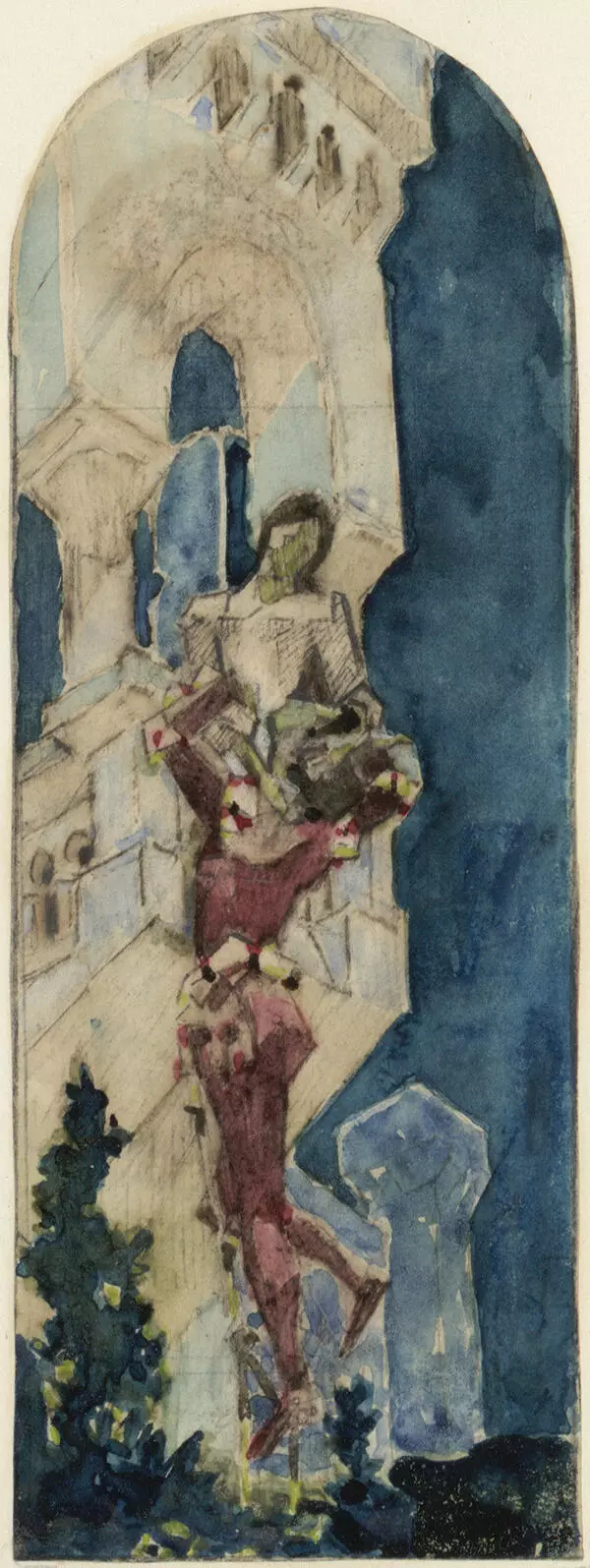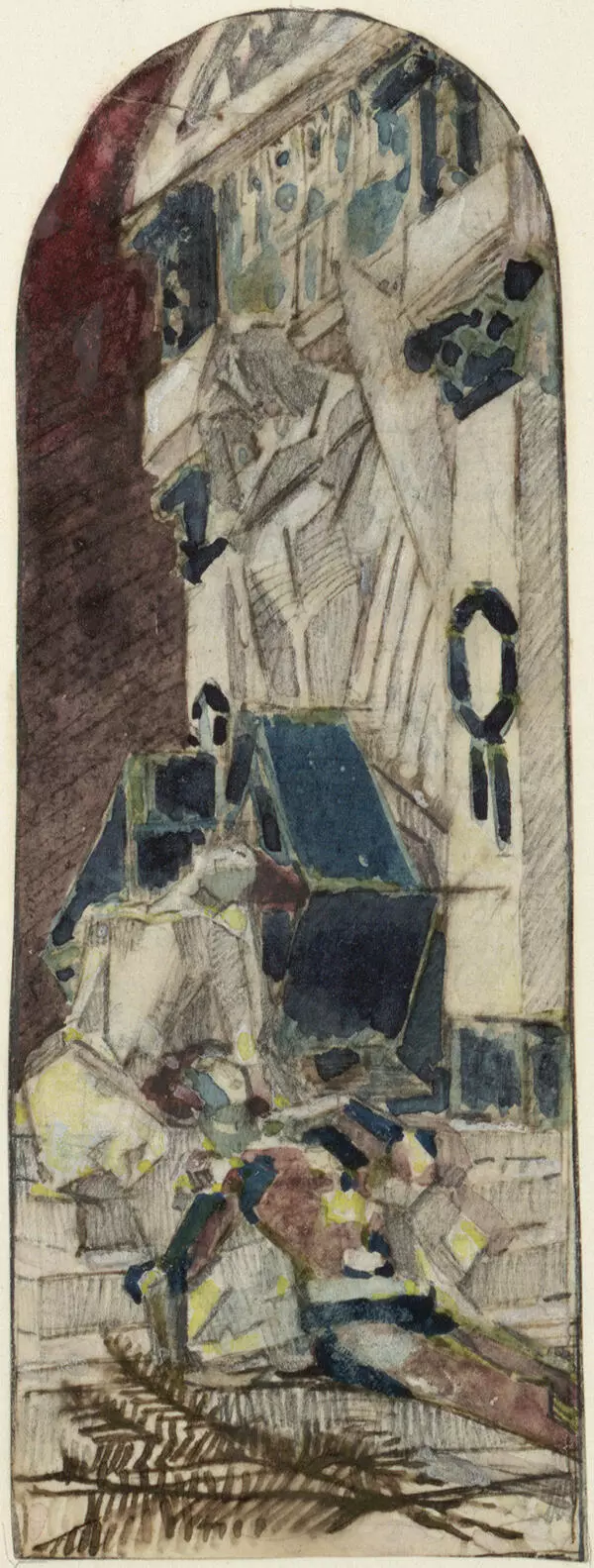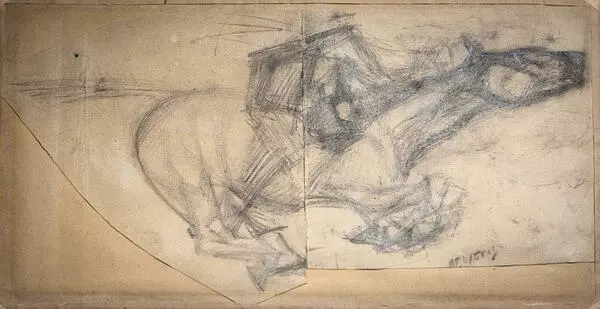Mikhail Vrubel hadn’t worked with the sculpture until 1889 when he found himself at Moscow art patron’s Savva Mamontov’s coterie in Abramtsevo. This artistic society regenerated traditions of Russian art in crafts. Many artists of the time were among its members, namely Viktor Vasnetsov, Konstantin Korovin, Valentin Serov, Mikhail Nesterov, Elena Polenova. Ambramtsevo estate’s inhabitants created their own ceramic workshop in order to resurrect the art of majolica (creating ceramic objects made of colored terra cotta covered with glaze). The artists expressed special interest to the very technology of glaze making. They wanted to reach the different decorative effects, for that they added different mixtures into the glaze.
Mikhail Vrubel learnt the art of sculpture from ceramist Petr Vaulin, who headed the workshop. The artist was attracted to the rich majolica’s capabilities and the shiny surface of the ceramic sculptures. This material’s possibilities could actualize all main features of art nouveau style: smooth, sliding shapes and textures, symbolism in details. The Dutch tiles and a stove in Abramtsevo main house were made after the Vrubel’s sketches. In Abramtsevo the artist achieved great success in majolica and soon started to lead the ceramic workshop himself. The contemporaries noted that Vrubel had a very responsible approach to any work, was it a small decorative jar or big scenic panels.
Mikhail Vrubel created a number of majolica sculptures at Abramtsevo’s workshop. ‘Egyptian woman’ was one of them. It is believed that the artist depicted Vera Mamontova here, back in the day a model for Valentin Serov’s masterpiece “Girl with Peaches”. At Vrubel’s work the complicated forms shape an ornament, different parts of the sculpture smoothly flow into each other. Majolica’s surface covered with glaze makes the object extensional. The colour is chosen for a reason. The black glaze transports the viewer back to the Egypt’s time with its traditional smalt sculptures. There are a few versions of this work (among them is the one made of bronze) kept in the collections of Russian museums.
Mikhail Vrubel learnt the art of sculpture from ceramist Petr Vaulin, who headed the workshop. The artist was attracted to the rich majolica’s capabilities and the shiny surface of the ceramic sculptures. This material’s possibilities could actualize all main features of art nouveau style: smooth, sliding shapes and textures, symbolism in details. The Dutch tiles and a stove in Abramtsevo main house were made after the Vrubel’s sketches. In Abramtsevo the artist achieved great success in majolica and soon started to lead the ceramic workshop himself. The contemporaries noted that Vrubel had a very responsible approach to any work, was it a small decorative jar or big scenic panels.
Mikhail Vrubel created a number of majolica sculptures at Abramtsevo’s workshop. ‘Egyptian woman’ was one of them. It is believed that the artist depicted Vera Mamontova here, back in the day a model for Valentin Serov’s masterpiece “Girl with Peaches”. At Vrubel’s work the complicated forms shape an ornament, different parts of the sculpture smoothly flow into each other. Majolica’s surface covered with glaze makes the object extensional. The colour is chosen for a reason. The black glaze transports the viewer back to the Egypt’s time with its traditional smalt sculptures. There are a few versions of this work (among them is the one made of bronze) kept in the collections of Russian museums.

